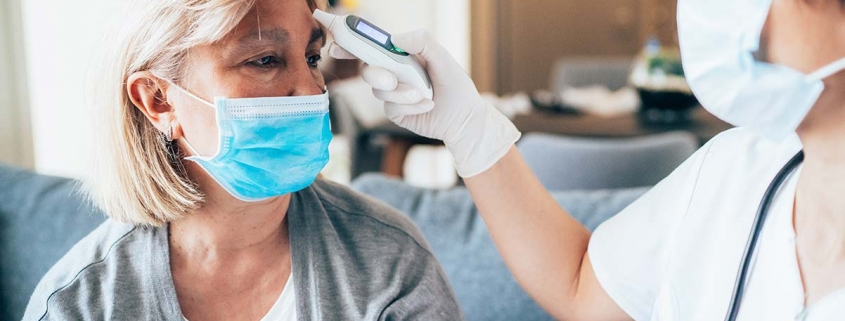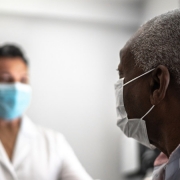Addressing Oncology Care Continuity During a Public Health Crisis
Crisis situations often call for creative solutions in healthcare and lean on the true strength of provider-patient relationships. While the stress of the COVID-19 pandemic is experienced across all walks of life, those with chronic or life-altering illnesses face unique challenges.
Care delivery for these patients cannot be put on hold. When dealing with a health crisis of such monumental proportions, oncology practices must identify ways of keeping patients safe and on track to achieve optimal outcomes. For cancer patients, the best approach ensures the full spectrum of care is addressed, including treatment, nutritional and emotional support.
Rolling with the Changes
Amid stay-at-home and social distancing orders, oncology practices remain essential and cannot simply shut their doors. Instead, providers need to adapt the way they run their practice while still maintaining continuity of care.
Our providers at American Oncology Network (AON) have deferred non-critical visits, such as six-month and annual follow-ups, but are continuing to see patients who are undergoing treatment or are newly diagnosed. In addition, we check with patients prior to each visit to determine if they are experiencing any symptoms associated with the virus – such as fever, cough, shortness of breath – and require they wear a mask to their appointment. One AON practice in Columbus, Ohio, screens patients for symptoms in a tent outside their facility before allowing them inside. All staff members have their temperatures taken daily, before and after each shift, and non-essential visitors are required to wait outside the clinic.
Amid industry shortages, our procurement team has done a tremendous job of ensuring our practices have the supplies they need to keep their facilities clean to ensure the safety of our patients – even going “old school” to overcome the lack of pre-packaged disinfectant wipes by utilizing paper towels and FDA approved cleaning solvents.
The Rise of Telehealth
Telehealth, which allows patients and physicians to communicate through videoconferencing, is experiencing a significant surge in utilization – not only because the COVID-19 pandemic has made it a necessity to conduct patient appointments remotely, but also because the Centers for Medicare and Medicaid Services has relaxed reimbursement requirements, with many commercial plans following suit. Telehealth is expected to remain popular even after the pandemic is gone.
Our physicians understand the benefits of developing personal relationships with each of their patients, which typically begin with a face-to-face visit. Over time, however, as the bond between doctor and patient grows stronger, telehealth may become a very viable alternative where appropriate. This current health crisis has simply accelerated its acceptance and adoption. And while there are some long-term issues to figure out, the COVID-19 pandemic has taught us that telehealth is essential to maintaining patient access to high-quality care.
Unfortunately, as could be expected, many small, independent community practices lack the IT expertise, bandwidth or technology to implement telehealth quickly enough to effectively serve their patients. Thankfully, because of the existing infrastructure and technical expertise at AON our growing network of more than 130 providers was able to offer virtual appointments via telehealth to their patients within a span of four days and all locations are conducting these types of appointments daily.
Compassionate and Patient-centric
While telehealth has become an essential part of practicing medicine, our practices haven’t lost sight of the emotional needs and mental health of our patients. AON addresses this through triage nurses and social workers proactively reaching out to patients suffering from depression or struggling with the isolation that comes with the current social distancing measures.
I cannot stress enough, especially under these circumstances, the importance of why we are in this business – to provide our patients with the best care possible.
Our patients are at the center of everything we do and every decision we make. Now, they need us more than ever. We are taking every possible step to continue providing exceptional care, safely and compassionately.















